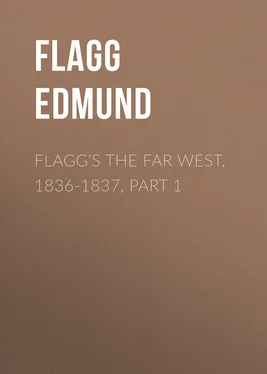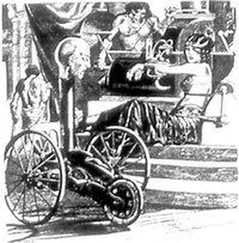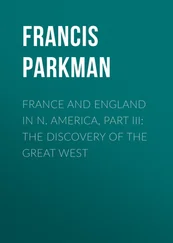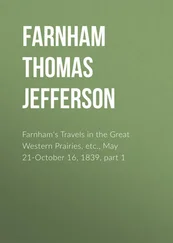Edmund Flagg - Flagg's The Far West, 1836-1837, part 1
Здесь есть возможность читать онлайн «Edmund Flagg - Flagg's The Far West, 1836-1837, part 1» — ознакомительный отрывок электронной книги совершенно бесплатно, а после прочтения отрывка купить полную версию. В некоторых случаях можно слушать аудио, скачать через торрент в формате fb2 и присутствует краткое содержание. Издательство: Иностранный паблик, Жанр: foreign_antique, foreign_prose, Путешествия и география, на английском языке. Описание произведения, (предисловие) а так же отзывы посетителей доступны на портале библиотеки ЛибКат.
- Название:Flagg's The Far West, 1836-1837, part 1
- Автор:
- Издательство:Иностранный паблик
- Жанр:
- Год:неизвестен
- ISBN:нет данных
- Рейтинг книги:4 / 5. Голосов: 1
-
Избранное:Добавить в избранное
- Отзывы:
-
Ваша оценка:
- 80
- 1
- 2
- 3
- 4
- 5
Flagg's The Far West, 1836-1837, part 1: краткое содержание, описание и аннотация
Предлагаем к чтению аннотацию, описание, краткое содержание или предисловие (зависит от того, что написал сам автор книги «Flagg's The Far West, 1836-1837, part 1»). Если вы не нашли необходимую информацию о книге — напишите в комментариях, мы постараемся отыскать её.
Flagg's The Far West, 1836-1837, part 1 — читать онлайн ознакомительный отрывок
Ниже представлен текст книги, разбитый по страницам. Система сохранения места последней прочитанной страницы, позволяет с удобством читать онлайн бесплатно книгу «Flagg's The Far West, 1836-1837, part 1», без необходимости каждый раз заново искать на чём Вы остановились. Поставьте закладку, и сможете в любой момент перейти на страницу, на которой закончили чтение.
Интервал:
Закладка:
Broad-horn was a term generally applied to the Mississippi and Ohio flat-boat, which made its advent on the Western waters later than the barge or the keel-boat. It was a large, unwieldy structure, with a perfectly flat bottom, perpendicular sides, and usually covered its entire length. It was used only for descending the stream.
"The earliest improvement upon the canoe was the pirogue, an invention of the whites. Like the canoe, this is hewed out of the solid log; the difference is, that the pirogue has greater width and capacity, and is composed of several pieces of timbers – as if the canoe was sawed lengthwise into two equal sections, and a broad flat piece of timber inserted in the middle, so as to give greater breadth of beam to the vessel." Hall, Notes on the Western States , p. 218. – Ed.
17
Flint. – Flagg.
18
For an account of the first steamboat on the Ohio, see Flint's Letters , in our volume ix, p. 154, note 76. – Ed.
19
Latrobe. – Flagg.
Comment by Ed. Charles J. Latrobe (1801-75) visited the United States in 1832-33. His Rambles in North America in 1832-3 (New York, 1835) and Rambles in Mexico (New York and London, 1836) have much value in the history of Western travel.
20
The first steamer upon the waters of the Red River was of a peculiar construction: her steam scape-pipe, instead of ascending perpendicularly from the hurricane deck, projected from the bow, and terminated in the form of a serpent's head. As this monster ascended the wilds of the stream, with her furnaces blazing, pouring forth steam with a roar, the wondering Choctaws upon the banks gave her the poetic and appropriate name of Pinelore , "the Fire-Canoe." – Flagg.
21
This quotation is from Botanic Gardens , book i, chapter i, by Erasmus Darwin (1731-1802). – Ed.
22
For Rome, see Maximilian's Travels , in our volume xxii, p. 160, note 77. – Ed.
23
Green River, rising in central Kentucky, flows west through the coal fields to its junction with the Big Barren; thence it turns north, and empties into the Ohio nine miles above Evansville, Indiana. Beginning with 1808 the state legislature expended large sums of money for improving navigation on Green River. As a consequence small steamboats may ascend it to a distance of more than a hundred and fifty miles. The length of the stream is estimated at three hundred and fifty miles. – Ed.
24
Diamond Island, densely wooded, is located thirty-six miles below the mouth of Green River, and seven miles above Mount Vernon. Its name is perhaps derived from its shape, being five miles long and one and a half wide. – Ed.
25
For note on Hendersonville, see Cuming's Tour , in our volume iv, p. 267, note 175. – Ed.
26
John J. Audubon, born in Louisiana (1780), was a son of a wealthy French naval officer; his mother was a Spanish Creole. Educated in France, he returned to America (1798) and settled near Philadelphia, devoting his time to the study of birds. In 1808 he went west and until 1824 made fruitless attempts to establish himself in business in Kentucky and Louisiana. He issued in London (1827-38) his noted publication on the Birds of America , which was completed in eighty-seven parts. During 1832-39 he published five volumes entitled Ornithological Biographies . Audubon died in 1851. See M. R. Audubon, Audubon and his Journals (New York, 1897). – Ed.
27
For the historical importance of the Wabash River, see Croghan's Journals , in our volume i, p. 137, note 107. – Ed.
28
The Wabash and Erie Canal, which connects the waters of Lake Erie with the Ohio River by way of the Maumee and Wabash rivers, has played an active rôle in the development of Indiana, her most important cities being located upon its route. The Ohio section was constructed during the years 1837-43, and the Indiana section as far as Lafayette in 1832-40; the canal being later continued to Terre Haute and the Ohio River near Evansville. Although the federal government granted Indiana 1,505,114 acres for constructing the canal, the state was by this work plunged heavily in debt. After the War of Secession the canal lost much of its relative importance for commerce. June 14, 1880, Congress authorized the secretary of war to order a survey and estimate of cost and practicability of making a ship canal out of the old Wabash and Erie Canal. The survey and estimate were made, but the matter was allowed to drop. See Senate Docs. , 46 Cong., 3 sess., iii, 55. – Ed.
29
For an account of New Harmony and its founder, George Rapp, see Hulme's Journal , in our volume x, p. 50, note 22, and p. 54, note 25. – Ed.
30
Flagg is evidently referring to Robert Owen, the active promoter of the scheme. A brief history of his activities is given in Hulme's Journal , in our volume x, p. 50, note 22.
For Robert Dale Owen see Maximilian's Travels , in our volume xxiv, p. 133, note 128. – Ed.
31
"Declaration of Mental Independence" delivered by Robert Owen (not Robert Dale Owen) on July 4, 1826, was printed in the New Harmony Gazette for July 12, 1826. An extended quotation is given in George B. Lockwood, The New Harmony Communities (Marion, Indiana, 1902), p. 163. – Ed.
32
For an account of William Maclure, see Maximilian's Travels , in our volume xxii, p. 163, note 81.
In reference to the Duke of Saxe Weimar, see Wyeth's Oregon , in our volume xxi, p. 71, note 47. – Ed.
33
On Shawneetown and the Shawnee Indians see our volume i, p. 23, note 13, and p. 138, note 108. – Ed.
34
For a brief statement on the salines, see James's Long's Expedition , in our volume xiv, p. 58, note 11. – Ed.
35
An excellent account of the Mound Builders is given by Lucien Carr in Smithsonian Institution Report , 1891 (Washington, 1893), pp. 503-599; see also Cyrus Thomas, "Report on Mound Explorations" in United States Bureau of Ethnology Report (1890-91). – Ed.
36
Hanging Rock is the name given to a high sandstone escarpment on the right bank of the river, three miles below Ironton, Ohio. – Ed.
37
Blennerhasset's Island is two miles below Parkersburg, West Virginia. For its history, see Cuming's Tour , in our volume iv, p. 129, note 89. – Ed.
38
A brief description of Rock Inn Cave (or Cave-in-Rock) may be found in Cuming's Tour , in our volume iv, p. 273, note 180. – Ed.
39
For Schoolcraft, see Gregg's Commerce of the Prairies , in our volume xx, p. 286, note 178. – Ed.
40
It is a remarkable circumstance, that this term is employed to signify the same thing by all the tribes from the Arkansas to the sources of the Mississippi; and, according to Mackenzie, throughout the Arctic Regions. – Flagg.
41
See Cuming's Tour , in our volume iv, p. 268. – Ed.
42
Ford's Ferry is today a small hamlet in Crittenden County, Kentucky, twenty-five miles below Shawneetown. Flagg is referring probably to the Wilson family. Consult Lewis Collins, History of Kentucky (Covington, 1874), i. p. 147. – Ed.
Читать дальшеИнтервал:
Закладка:
Похожие книги на «Flagg's The Far West, 1836-1837, part 1»
Представляем Вашему вниманию похожие книги на «Flagg's The Far West, 1836-1837, part 1» списком для выбора. Мы отобрали схожую по названию и смыслу литературу в надежде предоставить читателям больше вариантов отыскать новые, интересные, ещё непрочитанные произведения.
Обсуждение, отзывы о книге «Flagg's The Far West, 1836-1837, part 1» и просто собственные мнения читателей. Оставьте ваши комментарии, напишите, что Вы думаете о произведении, его смысле или главных героях. Укажите что конкретно понравилось, а что нет, и почему Вы так считаете.












